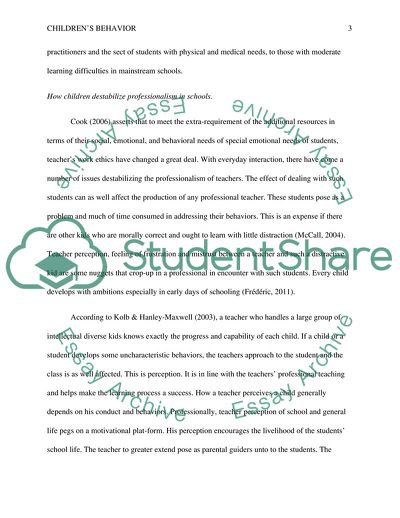Cite this document
(Understanding Childrens Behavior Essay Example | Topics and Well Written Essays - 3750 words, n.d.)
Understanding Childrens Behavior Essay Example | Topics and Well Written Essays - 3750 words. https://studentshare.org/psychology/1776846-with-reference-to-conceptual-frameworks-for-understanding-childrens-behaviour-critically-review-your-schools-settings-behaviour-policy-and-its-application
Understanding Childrens Behavior Essay Example | Topics and Well Written Essays - 3750 words. https://studentshare.org/psychology/1776846-with-reference-to-conceptual-frameworks-for-understanding-childrens-behaviour-critically-review-your-schools-settings-behaviour-policy-and-its-application
(Understanding Childrens Behavior Essay Example | Topics and Well Written Essays - 3750 Words)
Understanding Childrens Behavior Essay Example | Topics and Well Written Essays - 3750 Words. https://studentshare.org/psychology/1776846-with-reference-to-conceptual-frameworks-for-understanding-childrens-behaviour-critically-review-your-schools-settings-behaviour-policy-and-its-application.
Understanding Childrens Behavior Essay Example | Topics and Well Written Essays - 3750 Words. https://studentshare.org/psychology/1776846-with-reference-to-conceptual-frameworks-for-understanding-childrens-behaviour-critically-review-your-schools-settings-behaviour-policy-and-its-application.
“Understanding Childrens Behavior Essay Example | Topics and Well Written Essays - 3750 Words”. https://studentshare.org/psychology/1776846-with-reference-to-conceptual-frameworks-for-understanding-childrens-behaviour-critically-review-your-schools-settings-behaviour-policy-and-its-application.


